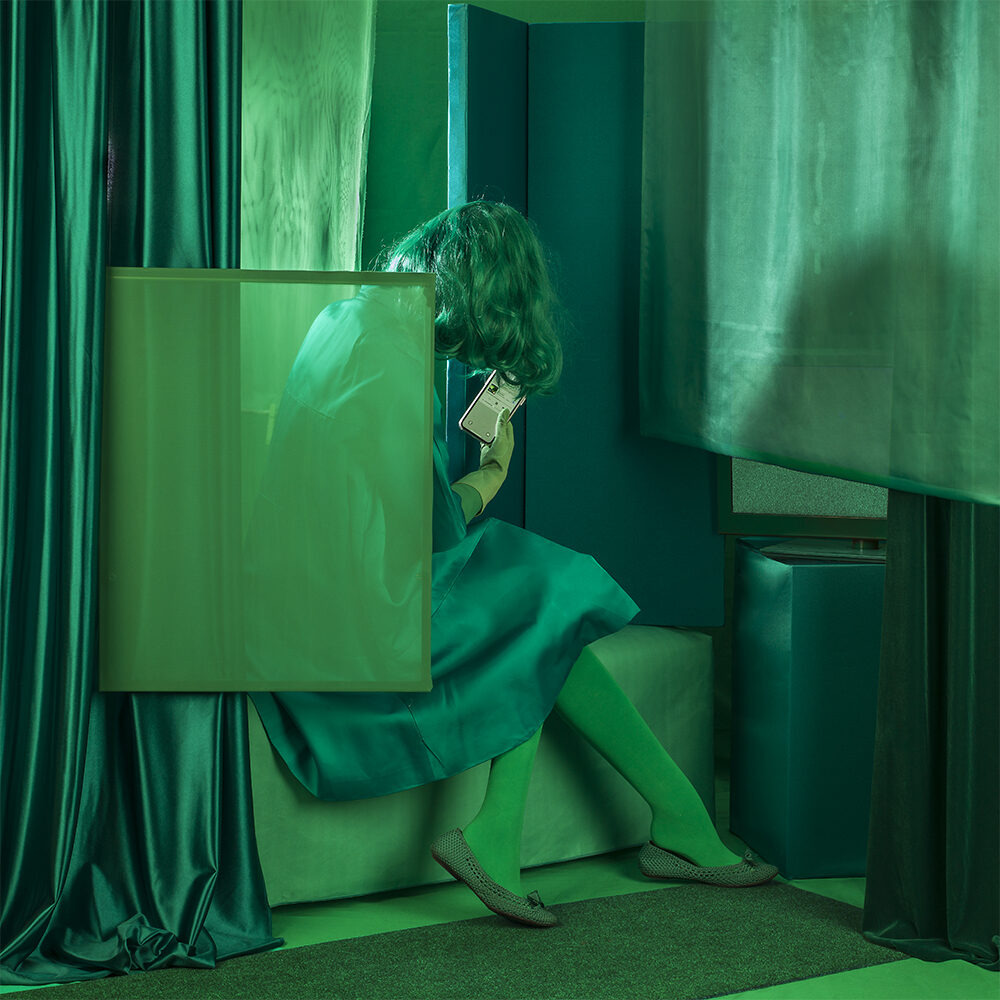For years all I wanted was to disappear. I wanted it so badly. To be forgotten entirely. Now that the world has paused, I sit on my bed, curtains closed. Everything has stopped. I have stopped. Stopped talking to people. Stopped going for walks. Stopped going to concerts. Stopped seeing friends. Stopped leaving the house altogether. Now I am not there anymore. I have become invisible, even to myself. As I let my mind wander in the immensity of the white walls that surround me, I have disappeared completely.

That feeling of blending into the decor has found its true sense of meaning in the work of Patty Carroll. In her series “Anonymous Women”, Carroll creates colourful and stylish scenes featuring headless mannequins, or women who have disappeared completely. Her installation art seeks to denounce gender-based stereotypes and excessive consumerism, and also explore the concept of home as a prison.
The series “Anonymous Women” consists of staged photographs of mannequins draped in various fabrics and surrounded by household objects, obscuring the female identity and blurring the boundaries between the female body and her environment. The use of bright colors and bold patterns in the fabrics creates a sense of playfulness, while also highlighting the absurdity of domestic expectations placed on women.
The photos explore themes of identity, conformity, and the pressure that women face to conform to social expectations. Women are rendered anonymous, reflecting the ways in which women are often reduced to stereotypes and predefined domestic roles.
Her artist statement says : “The home is a place of comfort but can also be camouflage for individual identity when idealized decor becomes an obsession, or indication of position or status. “Staying home” is a state that some women also aspire to as a place of power, while others abhor because of its prison-like atmosphere. In all cases, women need “A room of their own.”
The pandemic also had a significant impact on women, particularly in terms of their domestic roles and responsibilities. With schools and daycare centers closing, many women had to take on increased caregiving responsibilities for their children and elderly family members. This often resulted in women working less or having to leave the workforce altogether, leading to what has been termed a “she-cession”.
Additionally, with the blurring of lines between work and home life due to remote work and virtual communication, women’s domestic responsibilities and workload often increased, leading to a phenomenon known as the “double burden” of work and caregiving.
Overall, “Anonymous Women” is a thought-provoking and visually striking series that challenges viewers to question their assumptions about gender, identity, and conformity. In these pandemic days, it is accurate to think that gender inequalities were exacerbated.
Here are some of our favourite photographs.
By Lola Helena













